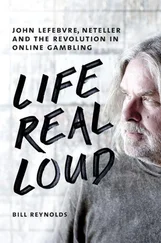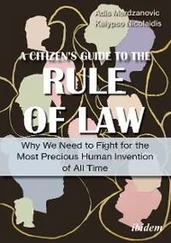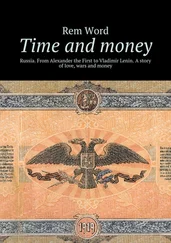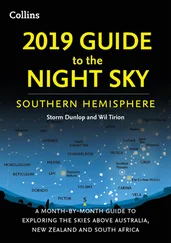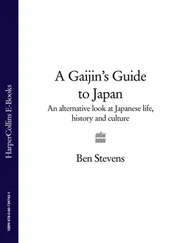But while Gorby had prevailed, Yeltsin had won. One day later, August 23, Yeltsin suspended the legal status of the Communist Party in Russia. Now it became clear who was really in charge. Yeltsin’s move forced Gorby to abandon the position as head of the party. On November 6, Yeltsin banned the party completely in Russia. And on December 31, the USSR simply disappeared at the stroke of Gorby’s pen.
The coupsters failed because they broke all the laws of a successful coup, as perfected by their hard-liner heroes of yore in Hungary, Czechoslovakia, and Afghanistan. They hadn’t planned lightning strikes against their targets nor dealt ruthlessly with resistance. They hadn’t smothered the media, corralled the intellectuals, and stonewalled the foreign press. Yeltsin was even able to speak to foreign leaders, including President George Bush. The coupsters had become trapped in the system just like all the victims they ruled.
In the end, the biggest mistake the coupsters made was that they had attacked the wrong man. It was Yeltsin who put the final spike into the heart of the system. His rise to power wasn’t based on better ideas. He cared only about Russia, was honest enough to say it, and brave enough to stand up for it. He was a practical, impetuous man, very often drunk, who in his last years as the Russian president could be found dancing goofily onstage at political rallies, with the self-aggrandizing gusto and hearty irrelevance of a Boston-Irish city councilman. The coupsters lived for their system and wanted nothing more than to preserve it exactly as it had always existed. It was the only world they had ever known. But Yeltsin concerned himself only about Russia, not the whole diseased corpse of the USSR, and the coupsters could not grasp that concept. They, like Gorby, wanted to control the whole stinking system.
The coupsters never saw Yeltsin coming.
The whole incident revealed that Gorby’s small steps toward an impossible goal did create something good for the Soviet people. But Gorby himself resisted the inevitable changes he had brought about. After the coup he struggled to remain at center stage but found that Yeltsin had irretrievably replaced him. On the last day of 1991, Gorby signed off on the dissolution of the empire and became another faceless Eurocrat ranging the plains of Europe, his Nobel in tow.
In 1996 Yeltsin was reelected president of Russia and led the country through the chaotic devolution from superpower to a much poorer version of France but with lousy food. After almost ten years of increasingly corrupt governance, the Russian people came to hate Yeltsin for his many faults. He left office in 1999 and died in 2007, virtually forgotten. He had proved finally, alas, to be simply one of them. But for a few glorious days, he had been a democrat.
The coupsters, overall, fared pretty well. Most were rounded up after the coup collapsed. They were convicted for their roles; two years later they were given amnesty by the government. Perhaps it was the reformist nature of Soviet prisons, or maybe they saw the light, but most bought into the new system they opposed and became productive members of the new economic ruling class. Pugo, however, could not handle the strain of the defeat. Distraught over the coup’s collapse, the next day, he and his wife committed suicide.
The authors would like to acknowledge everyone who supported and encouraged us during the writing of this book.
CHAPTER 1
Baker, Simon. Ancient Rome: The Rise and Fall of an Empire. BBC Books, 2006.
Barbero, Alessandro. The Day of the Barbarians; The Battle that Led to the Fall of the Roman Empire. Walker and Co., 2007.
Lenski, Noel. Failure of Empire, Valens and the Roman State in the Fourth Century, A.D. University of California Press, 2002.
CHAPTER 2
Payne, Robert. The Dream and the Tomb: A History of the Crusades. Stein and Day, 1984.
Phillips, Jonathan. The Fourth Crusade and the Sack of Constantinople. Viking Penguin, 2004.
Robinson, John J. Dungeon, Fire and Sword; The Knights Templar in the Crusades. Brockhampton Press, 1999.
CHAPTER 3
Chernow, Ron. Alexander Hamilton. Penguin, 2004.
Ellis, Joseph J. Founding Brothers. Knopf, 2000.
Hogeland, William. The Whiskey Rebellion. Scribners, 2006.
Royster, Charles. Lighthorse Harry Lee and the Legacy of the American Revolution. Louisiana State University Press, 1981.
Slaughter, Thomas P. The Whiskey Rebellion, Frontier Epilogue to the American Revolution. Oxford University Press, 1986.
Sloan, Irving J. Our Violent Past: An American Chronicle. Random House, 1970.
CHAPTER 4
Brodsky, Alyn. Madame Lynch & Friend. Harper and Row, 1975.
Cawthorne, Nigel. The Empress of South America. Random House, 2003.
Gimlette, John. At the Tomb of the Inflatable Pig: Travels through Paraguay. Vintage Departure, 2003.
Leuchars, Chris. To the Bitter End: Paraguay and the War of the Triple Alliance. Greenwood Press, 2002.
Scheina, Robert L. Latin America’s Wars. Vol. I . Brassey’s Inc., 2003.
Whigham, Thomas. The Paraguayan War. University of Nebraska Press, 2002.
CHAPTER 5
Barton, Robert. A Short History of Bolivia. Werner Guttentag, 1968.
Farcau, Bruce W. The Ten Cents War: Chile, Peru and Bolivia in the War of the Pacific, 1879–1884. Praeger, 2000.
Hunefeldt, Christine. A Brief History of Peru. Facts on File, 2004.
Klein, Herbert S. Bolivia: The Evolution of a Multi-Ethnic Society. Oxford University Press, 1992.
Scheina, Robert L. Latin America’s Wars: The Age of the Caudillo, 1791–1899 , Brassey’s Inc., 2003.
CHAPTER 6
Graves, William S. America’s Siberian Adventure. Arno Press/ New York Times, 1971. First published 1931 by Jonathan Cape and Harrison Smith.
Luckett, Richard. The White Generals: An Account of the White Movement and the Russian Civil War. Viking Press, 1971.
Maddox, Robert J. The Unknown War with Russia: Wilson’s Siberian Intervention. Presidio Press, 1977.
Mead, Gary. Doughboys: America and the First World War. Overlook Press, 2000.
Unterberger, Betty Miller. America’s Siberian Expedition, 1918–1920. Greenwood Press, 1956.
CHAPTER 7
Dornberg, John. Munich 1923. Harper and Row, 1982.
Jones, Nigel. The Birth of the Nazis: How the Freikorps Blazed a Trail for Hitler. Carroll and Graf, 2004.
Read, Anthony. The Devil’s Disciples: Hitler’s Inner Circle. Norton, 2003.
Shirer, William. The Rise and Fall of the Third Reich. Simon and Schuster, 1960.
CHAPTER 8
Farcau, Bruce W. The Chaco War: Bolivia and Paraguay, 1932–1935. Praeger Publishers, 1996.
Hughes, Matthew. “Logistics and the Chaco War: Bolivia versus Paraguay, 1932–1935.” Journal of Military History (April 2005): 411–37.
Klein, Herbert S. Parties and Political Change in Bolivia 1880–1952. Cambridge University Press, 1969.
Time archives.
von Schey, Lida. Estigarribia and the Chaco War. University of St. Andrews, 1984.
Zook, David H. Jr., The Conduct of the Chaco War. Bookman Associates, 1960.
CHAPTER 9
Engle, Eloise, and Lauri Paananen. The Winter War: The Russo-Finnish Conflict, 1939–40. Charles Scribner’s Sons, 1973.
Читать дальше

